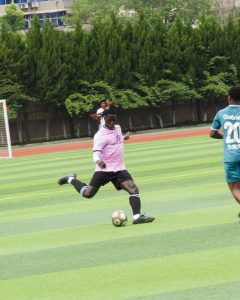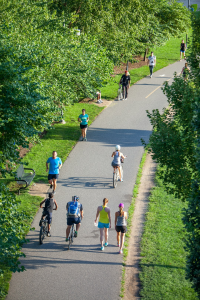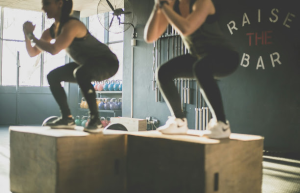
Hey, Wanderers!
Do you hit the gym consistently, eat “healthy,” but the results seem to plateau?. What if there was a way to optimize your body for peak performance, recovery, and overall well-being? Lets enter the fascinating world of biohacking.
Biohacking isn’t some futuristic sci-fi concept. It’s a rapidly growing trend that utilizes science, technology, and lifestyle modifications to hack your biology for improved health and performance.
What is Biohacking?
Intermittent fasting is one type of biohacking that has been around for years, smartwatches belong to another type of biohacking called technology-based biohacking, and as we move into the next decade, biohacking is poised to revolutionize the fitness landscape for the adventurous spirit in all of us.
…..I think I am a future biohacker(A biohacker is somebody who uses science and technology to make his or her body function better and more efficiently).
The beauty of biohacking is making lifestyle changes based on science. Rather than guessing how to achieve full-body wellness, you implement changes based on your unique makeup. This helps you prioritize and focus on the aspects of your health that need the most attention. Not only will you feel your progress, you are able to measure your improvement.
Types of Biohacking
According to Australia Sports Nutrition, and Medical News Today, there are many forms of biohacking but the three most popular types include DIY biology, nutrigenomics, and grinders.
DIY biology
DIY biohacking, which some people also call garage biology, involves experts in scientific fields(such as Dave Asprey, Andrew Huberman, and Mark Hyman) sharing biohacking techniques and tips that everyday citizens can learn and harness to improve their health. This allows more people to conduct experiments on themselves outside of a constrained environment.
Some people consider DIY biology to be an open revolution against the academic institutionalization of science and aim to spread an attitude of citizen science and action research without rigid gatekeeping. It allows more freedom in how you approach your health and wellness goals, providing more ideas, spontaneity, and flexibility through avenues like microbiology, nutrition, and biomedicine.
DIY biology includes various fields of biohacking, including: microbiology, nutrition, biomedical and synthetic biology.
Nutrigenomics
Nutrigenomics is another biohacking type that focuses on how food interacts with people’s genes i.e. the genetic impact of food. . Likewise, it explores how a person’s genes affect their body’s response to food.
Researchers are using nutrigenomics to learn more about diet and genes, how they may affect a person’s health risks, and to help find new ways to prevent and treat disease.
You can send a DNA sample to a specialized laboratory, where your genetic makeup is analyzed. Then the results are used to create an optimized nutrition plan which may involve avoiding certain foods linked to conditions you are genetically predisposed to.
Grinders
Think of this in terms of a futuristic Sci-Fi movie which showcases concepts such as human implants, body modifications, and so on. This type of biohacking normally involves devices implanted under the skin, and the use of technology to perform body modifications.
Will Biohacking Shape the Future of Fitness?
I think the important question isn’t supposed to be “Will it shape the future of fitness?” rather “How will it shape the future of fitness?“, because there are already many examples of biohacking which are common today, and people consider them just a part of everyday life, take nootropics(supplements such as creatine and caffeine, drinks, and foods) for example. Let’s delve into a few exciting possibilities:
1. Personalized Performance Optimization
Gone are the days of one-size-fits-all workout routines. Biohacking leverages tools like genetic testing and wearable sensors to create personalized fitness plans that target your unique physiology. Imagine training programs tailored to your genetic predispositions for strength, endurance, and recovery!

2. Sleep Hacking for Peak Recovery
Sleep is the ultimate performance enhancer, yet many of us struggle to prioritize it. Biohacking introduces tools like sleep trackers and biofeedback devices that help us understand our sleep patterns and optimize our sleep environment for deeper, more restorative rest.
3. Nutrition Hacks for Optimal Fueling
Biohacking goes beyond just counting calories. It delves into the world of nutrigenomics, exploring how your genes influence your nutritional needs. Imagine personalized meal plans based on your genetic makeup to maximize energy levels and optimize your body’s ability to utilize nutrients.
4. Wearables Get Smarter
We’ll still see a rise in sophisticated wearable technologies that go beyond tracking steps and heart rate. With more companies investing heavily in the research and development of the technology, these advanced wearables will monitor everything from blood sugar levels to hydration status, providing real-time data to optimize your workouts, nutrition, and overall health.
5. Biofeedback Training for Peak Efficiency
Biofeedback training utilizes sensors that provide real-time feedback on your body’s responses. Imagine training your brain to optimize muscle usage or manage stress levels during exercise, leading to more efficient workouts and faster results.
My fellow Wanderers, we should remember that biohacking isn’t a magic bullet. It’s about empowering yourself with knowledge and tools to understand your unique body and optimize your fitness journey.
7 Biohacks to Try in 2024
Biohacking is about finding what works for your unique body. So here are the practices that I am currently experimenting with while monitoring my response, and prioritizing evidence-based approaches over fads. You can try any of these to enhance your health, well-being, and fuel your adventures for months to come!
1. Light Hacking: Optimizing the sleep-wake cycle by syncing your exposure to natural light with your circadian rhythm. I will get plenty of sunlight during the day and minimize bright screens or artificial light exposure in the evenings.
2. Cold Therapy: During my hot showers, especially after a workout, I tend to switch my shower cold for short time intervals. Short bursts of cold exposure (cold showers, ice baths) can activate brown adipose tissue (BAT), which helps burn calories and boost metabolism. It can also reduce inflammation and improve muscle recovery.
3. Mindfulness Meditation: This practice improves focus, reduce stress, and enhance sleep quality. I understand by quieting my mind, I am able to promote relaxation and potentially improve my body’s ability to heal and recover.
4. Intermittent Fasting: This involves cycling between periods of eating and fasting. I do not use only one type of fasting but the most frequent one is the 16-8 hour type of fasting where you have a 16-hour window of fasting and an 8-hour window of eating. Studies suggest it can improve metabolic health, reduce inflammation, and potentially promote longevity. But prior to starting this or any other form of fasting, it’s crucial to consult with a healthcare professional.
5. Breathwork: Specific breathing exercises can activate the parasympathetic nervous system, promoting relaxation and reducing stress. I have tried techniques like box breathing or alternate nostril breathing which can be easily incorporated into your daily routine as well.
6. Probiotics: These gut-friendly bacteria play a vital role in digestion, immune function, and overall health. I consume probiotic-rich foods like yogurt, sauerkraut, and take a daily probiotic supplement which in turn support gut health and potentially improve mood and cognitive function.
7. Supplementation (Done Right): I learnt that strategic supplementation can address specific deficiencies and optimize your well-being. An important step to start with is consulting a healthcare professional to assess your needs and determine if specific vitamins, minerals, or herbal supplements can be beneficial for you.
3 Things to Consider in Biohacking
Although I have already shared with you the concept and dynamics of biohacking, it’s important to approach this trend cautiously. Here are 3 key things to keep in mind:
1. Focus on Evidence-Based Practices
Not everything labeled “biohacking” is backed by science. Do your research and prioritize methods supported by credible research.
2. Consult with Professionals
Biohacking can be complex. Consider consulting a registered dietitian, certified personal trainer, or other qualified healthcare professional to create a safe and effective biohacking plan for you.
3. Listen to Your Body
While biohacking can be a powerful tool, it shouldn’t replace your intuition. Always listen to your body’s needs, and adjust your approach accordingly.
Final Word
Through this research, I have realized that the future of fitness is personalized, data-driven, and empowering. Biohacking offers exciting possibilities for wanderers seeking to optimize their health and performance.
And, by approaching this trend with a critical eye and a focus on evidence-based practices, we can unlock our full potential and conquer every adventure with renewed vigor.
Let’s embrace the future of fitness, wanderers, and embark on a journey of self-discovery and biohacking for a healthier, stronger, and more adventurous you!

Onward, to conquer and thrive, with the power of biohacking!
P.S. Share your thoughts on biohacking in the comments below! How do you think it will shape your fitness journey in the next decade?



